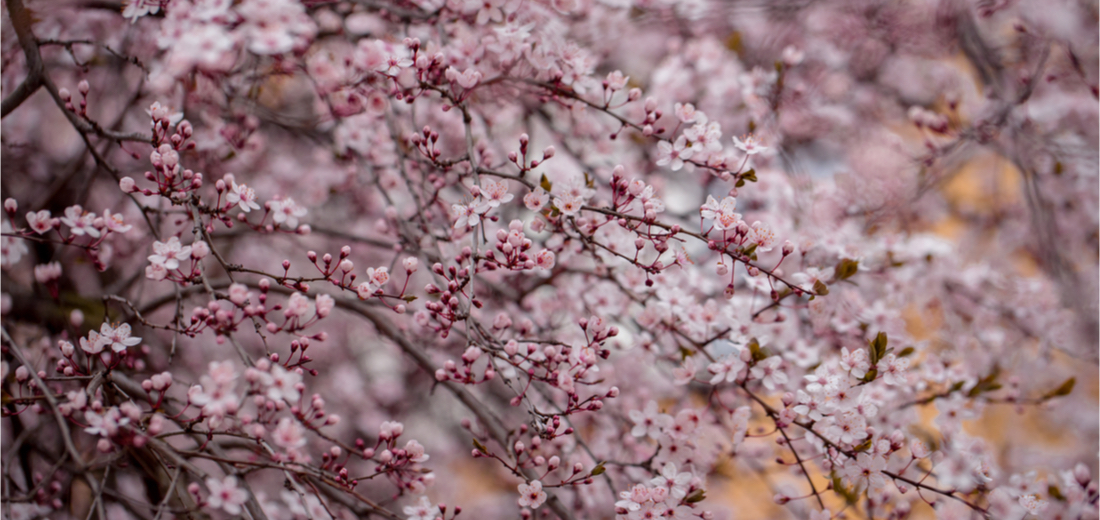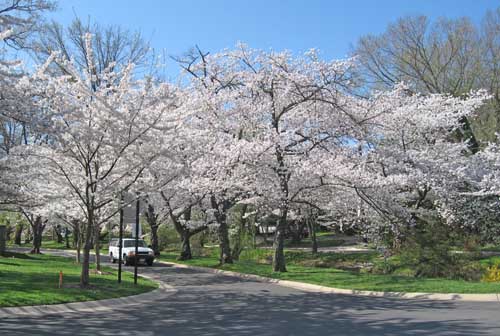
Flowering cherry trees, especially the late-blooming Kwanzan variety, have been hit with widespread dieback of branches and stems on their flowering cherry trees. The branch tips die back, leaving clusters of dead, brown leaves. The cause is a fungal disease called Brown Rot Blossom Blight. The blight attacks fruit trees such as fruiting and flowering apricots, cherries, nectarines, peaches and plums.

Fungus spores infect the tree blossoms in the spring, when the blooms begin to age. Many tiny black spores begin to cover the dying flowers. The spores become active and start to kill the branch tip and work back towards the trunk.
Once the dieback begins, the disease cannot be controlled. The only recourse is to prune off the dead portions of the branches and dispose of them in the trash. However, you can help prevent the reinfection of your plants by cleaning up all ground litter from the tree – it may still be harboring the blight spores. The tree should then be sprayed in early spring with a fungicide recommended for control of that fungus. They should be applied when the flower buds swell and begin to show petal color. The tree should be sprayed again after all the petals fall. The applications are done to kill any spores that may be present on the tree.
For the prevention of Brown Rot Blossom Blight, these are the recommended fungicides to be applied to fruit trees in early spring:
- Infuse, by Bonide. Active ingredient: Propiconazole
- 3-in-1 Insect, Disease & Mite Control by Bayer Advanced. Active ingredient: Tebuconazole.
- Serenade, by Agra Quest. Active ingredient: QST 713 strain of Bacteria subtilis.
- Sulfur Plant Fungicide by Bonide.
Sources: Oregon State and Scott Aker, horticulturist at the U.S. National Arboretum.
